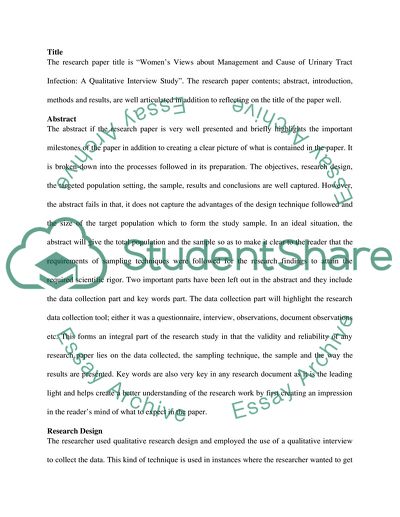Cite this document
(“Womens Views about Management and Cause of Urinary Tract Infection Book Report/Review”, n.d.)
Retrieved de https://studentshare.org/health-sciences-medicine/1566820-critical-appraisal-of-research-papers-womens-views-about-management-and-cause-of-urinary-tract-infection-qualitative-interview-study
Retrieved de https://studentshare.org/health-sciences-medicine/1566820-critical-appraisal-of-research-papers-womens-views-about-management-and-cause-of-urinary-tract-infection-qualitative-interview-study
(Womens Views about Management and Cause of Urinary Tract Infection Book Report/Review)
https://studentshare.org/health-sciences-medicine/1566820-critical-appraisal-of-research-papers-womens-views-about-management-and-cause-of-urinary-tract-infection-qualitative-interview-study.
https://studentshare.org/health-sciences-medicine/1566820-critical-appraisal-of-research-papers-womens-views-about-management-and-cause-of-urinary-tract-infection-qualitative-interview-study.
“Womens Views about Management and Cause of Urinary Tract Infection Book Report/Review”, n.d. https://studentshare.org/health-sciences-medicine/1566820-critical-appraisal-of-research-papers-womens-views-about-management-and-cause-of-urinary-tract-infection-qualitative-interview-study.


